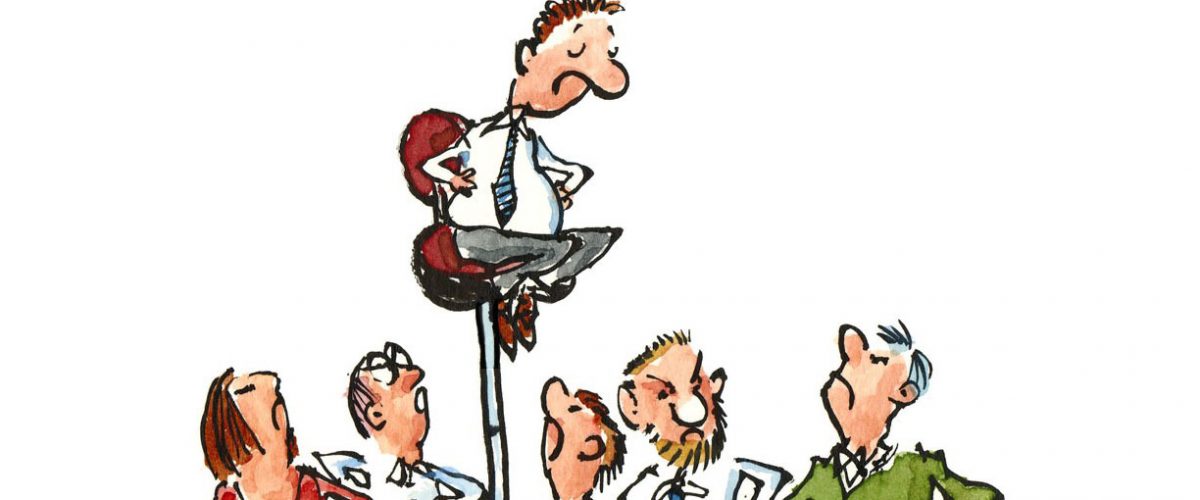

The notion that more hierarchically structured organizations diminish innovation is widely accepted by the business community and many scholars. However, Kelly E See, PhD, assistant professor of Management, found that in certain stages of the innovation process, it’s more beneficial to have a vertical hierarchical structure rather than a flatter structure.
In her article, The Influence of Hierarchy on Idea Generation and Selection in the Innovation Process, recently published in Organization Science, See and colleague Dongil Keum at Columbia University focused on how hierarchy affects two phases of the innovation process:
- The idea generation phase
- The idea selection phase
Based on results from a field study of a multinational fashion retailer and a lab experiment, See and Keum found that hierarchy is detrimental to the idea generation phase of innovation, yet it’s beneficial during the selection or screening phase of innovation.
Hierarchy inhibits innovation at the idea generation phase
During the idea generation phase, employees come up with new solutions to a problem. Oftentimes, new ideas are formed during brainstorming sessions.
Various studies confirm that in the presence of authority, employees are more likely to self-censor or internally filter their ideas during brainstorming sessions. They’re also more likely to come up with safer ideas and feel apathetic towards creating new ideas in belief that management won’t implement them.
See’s research concluded that during the idea generation phase, having higher-ups in the room generates fewer ideas, redundant ideas, or less risky ideas in terms of cost and originality. The study defined a creative idea based on its originality and feasibility.
The goal in brainstorming sessions is to create an environment where people feel free and uninhibited to come up with novel ideas, including risky ones. See’s research found to eliminate self-censorship, employees need to generate ideas without management present or ideas need to remain anonymous.
Hierarchy helps innovation during the selection stage
During the selection stage, or the time to decide which ideas to implement, See found hierarchy had the opposite effect. It’s better to have supervisors or higher-ups involved in this stage, because caution and realism ensure the right decisions are being made. This stage of the process is when deadlines, budgets, and feasibility are applied to ideas.
Surprisingly, the study found that when higher-ups were present during the selection process, employees were more open to ideas other than their own. This is very important because “behavioral decision-making research on advice taking has found that there is a robust tendency for people to egocentrically favor their own initial ideas and undervalue the advice or ideas of others, often leading to impaired decision quality,” See added.
When higher-ups were present during the selection process, employees were more open to ideas other than their own.
See also relayed the importance of having a diverse group of employees when selecting which ideas to implement. Diversity among the group helps everyone remain unbiased and open to others’ ideas, which supports the process of choosing the best solution.
Be cautious before adopting a flatter structure
Within organizations, company structures typically tend to go either flat or vertical. For the past decade, flat hierarchy structures have become trendy. However, research shows that different industries are better suited for various hierarchical structures.
A success story using a fluid hierarchy structure
Adopting a more fluid or flexible hierarchical structure may be a better alternative for your organization.
A company that successfully uses a fluid type structure is IDEO, a product development company. It keeps its idea generation stage completely anonymous by having all employees present ideas on Post It notes. This method eliminates bias and creates an environment where employees can share riskier ideas without fear. During the selection stage, company utilizes a more vertical hierarchical format, where various management and executive members and employees are present. IDEO has proven their innovation process by implementing these fresh ideas successfully.
By implementing different types of hierarchical structures at various innovation stages, a company can create the ideal environment for employees to be inspired. This fluid structure also allows all employees to be more open minded towards others’ ideas during the selection process.
Kelly E. See’s research appears in leading business and disciplinary journals and has been cited in many media outlets. Her current research focuses on how employee input or advice is provided and used in organizations. She teaches several courses at the CU Denver Business School under the management discipline.


